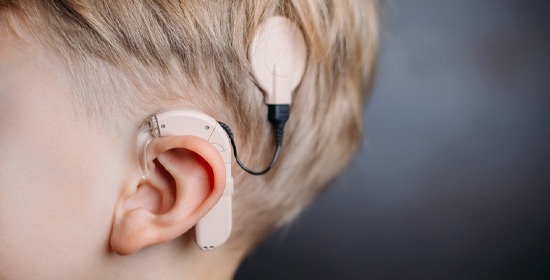Cochlear Implant Surgery In Delhi (India)
Cochlear Implant Surgery, a remarkable procedure that restores hearing, is expertly performed by Dr. Dhirendra Singh Kushwah, transforming lives through sound.
What is Cochlear Implant Surgery
Cochlear implant surgery is a transformative medical procedure designed to restore hearing for individuals with severe to profound hearing loss or deafness. Unlike traditional hearing aids that amplify sound, cochlear implants directly stimulate the inner ear's auditory nerve.
During the surgery, a small electronic device is surgically implanted beneath the skin behind the ear. This device consists of an external speech processor worn on the ear and an internal component surgically placed under the skin.
Surgical Process
The surgical process for cochlear implantation typically involves several key steps:
Anesthesia: The patient is placed under general anesthesia to ensure they are comfortable and pain-free during the procedure.
Incision: A small incision is made behind the ear, exposing the mastoid bone and the middle ear.
Mastoidectomy: The surgeon performs a mastoidectomy, which involves removing a portion of the mastoid bone to access the middle ear.
Electrode Array Insertion:
A tiny opening is created in the cochlea's bony wall.
The cochlear implant electrode array is inserted into the cochlea through this opening.
The array's electrodes are carefully positioned to stimulate different regions of the cochlea based on the patient's hearing needs.
Connection to Receiver-Stimulator:
The electrode array is connected to a receiver-stimulator unit placed beneath the skin behind the ear.
This unit receives signals from the external speech processor worn on the ear and sends electrical impulses to the auditory nerve.
Wound Closure:
The incision is closed with sutures, and the surgical site is dressed.
Activation and Rehabilitation:
The external speech processor is activated after a healing period, typically a few weeks.
The patient undergoes comprehensive auditory rehabilitation to learn how to interpret and make sense of the sounds provided by the cochlear implant.
Techniques:
Mastoidectomy: This technique involves the removal of a portion of the mastoid bone, allowing access to the middle ear and cochlea.
Round Window Insertion: In some cases, the surgeon may insert the electrode array through the round window of the cochlea, a smaller and more delicate opening than traditional cochleostomy.
Cochleostomy: A cochleostomy involves creating a small opening in the cochlea's bony wall to insert the electrode array. This is a common technique for electrode placement.
Electrode Array Insertion: Careful insertion of the electrode array into the cochlea, ensuring precise positioning to stimulate specific regions of the cochlea.
Receiver-Stimulator Placement: The receiver-stimulator unit is positioned beneath the skin behind the ear and connected to the electrode array. It receives signals from the external speech processor.
Suture Closure: The surgical incision is closed with sutures to facilitate healing and minimize infection risk.
Are you or a loved one experiencing hearing difficulties? Don't let hearing loss limit your quality of life. Dr. Dhirendra Singh Kushwah, a leading audiology and cochlear implantation expert, guides you on your journey to improved hearing and a world of vibrant sounds.
With years of experience and a dedication to transforming lives through audiological solutions, Dr. Dhirendra Singh Kushwah offers personalized assessments, state-of-the-art cochlear implant surgery, and comprehensive post-implantation care.
Take the first step towards a future filled with the joy of sound. Whether you're seeking cochlear implant evaluation, hearing aids, or expert advice on hearing health, Dr. Kushwah is your trusted partner.
Watch Here Cochlear Implant Treatement Video!
Treatment Images
Read More




